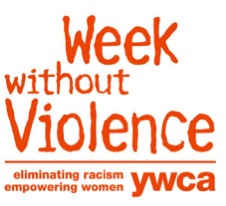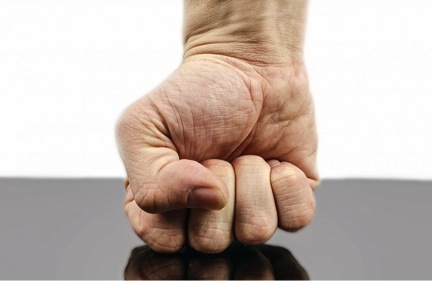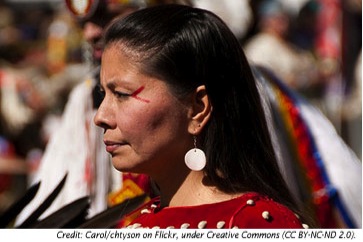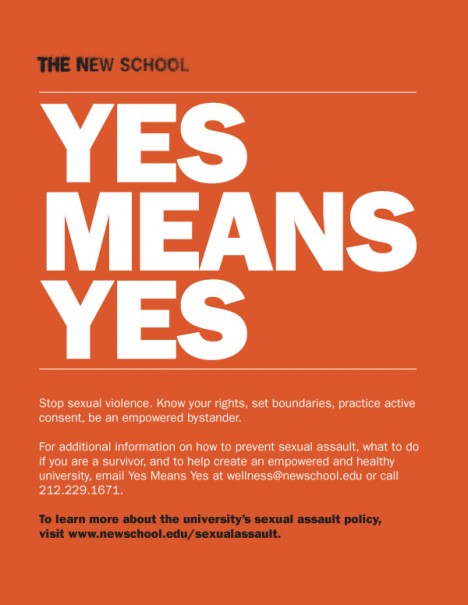Written by Perry Firth, project coordinator, Seattle University’s Project on Family Homelessness and school psychology graduate student
It can be hard to see your own culture. Like oxygen, it is everywhere and easily taken for granted.
This post is about domestic violence, but it is also one about culture – that invisible omnipresent force that we are born into and then grow up in, until we take certain things for granted – like if you work hard you will succeed, ice cream should go with apple pie, and violence to varying degrees of severity is an expected component of the female experience.
I know the last statement is a strong one. But its veracity is revealed when you think about a variation of its alternative — “women do not face unique threats to their physical safety in our culture.” I suspect that not many would agree with this statement. Further, the degree to which women fear physical and sexual violence reveals the extent to which our culture is telling them they are vulnerable. It also is an indicator that women themselves believe they are at greater risk.
The reality is that we shouldn’t talk about something as pervasive as violence against women without questioning the cultural factors that cause and then sustain it, and we can’t understand it without shedding light on why it disproportionately impacts women who are poor and non-white.
Now seemed like as good of a time as ever to have this discussion given that October is Domestic Violence Awareness Month and this week is the YWCA USA’s annual Week Without Violence. The recent spotlight on the Ray Rice domestic violence case (expertly illuminated by my colleague Emma Lytle in her Firesteel piece “Domestic Violence and the NFL: Tackling the Problem”) also means that violence against women is getting more attention than normal.

Finally, I wanted to write about violence against women because the recent NFL scandal provides an excellent example of how power, money and broader cultural forces can corrupt not only the NFL’s responses to its players’ violence, but police reporting and the judicial process. This, especially, has been hard for me to witness, and has highlighted on a broader level the many barriers women face in their quest for equality.
After all, the NFL is not separate from the broader culture, but a creation of it.
This reality makes me feel underwhelmed with our society’s progress. As illuminated by the NFL scandal, it makes me feel like violence against women is only a problem in our society if it makes powerful men look bad or hurts their career prospects.
So to provide some context for what the NFL domestic violence scandal has recently brought to the surface, here are some important violence statistics.
VIOLENCE AGAINST WOMEN STATISTICS
Domestic violence is surprisingly common, as these statistics reveal:
- 66 percent of attacks against women are perpetrated by men the women know.
- 19.3 million US women have experienced stalking, and 66.3 percent of these cases are perpetrated by male partners.
- 94 percent of all murder-suicide victims are female, and in three-fourths of these cases the attack happens within an intimate partnership. Further, of perpetrators committing this type of crime, 90 percent are male, and the most common place for their occurrence is the bedroom.
- Intimate partner violence accounts for 15 percent of all violent crime.
- Every year, one in three women who is a victim of homicide is murdered by her current or former partner.
- Women ages 20-24 are at greatest risk of experiencing domestic violence.
More than strictly physical violence, sexual violence is common as well. (And there is overlap between physical and sexual violence too).
- One in two women experiences sexual victimization other than rape (like attempted rape, stalking, unwanted sexual contact) in her lifetime.
- One in five women has been raped in her lifetime (compared to one in 71 men).
- Of those women who are raped, 51.1 percent report being raped by an intimate partner, and 40.8 percent report being raped by an acquaintance. So more than 90 percent of all rapes are completed by a man the woman knew and most likely trusted.

A VIOLENCE CONTINUUM
When I read these statistics, I wonder how it is that something so basic and mundane as anatomy can have such far-reaching and complex consequences. How to be female in America today, regardless of your socio-demographic status and the opportunities available to you, is to either experience or to fear physical and/or sexual violence.
What’s worse, this violence is most likely to come from a man a woman knows and most likely trusts; after all, that is how he made it into her home, car, or physical space in the first place.
From these statistics it is also apparent that violence against women takes many forms, and as is the case with most things in life, exists on a continuum.
So to bring this all back to domestic violence, it’s apparent that while it is associated with certain behaviors and cycles, it is still part of our broader culture. This means that it is different than, yet still part of, street harassment, rape and rape jokes.
Put another way, there is just too much violence against women to argue that these types of crimes are perpetrated by “psychopaths” or outliers. Yes, the experiences of the abuser growing up plays an important role (violence is often learned), yet so does a culture that persistently blames the victim, questions women’s reports of violence, protects powerful men from prosecution and hands down light sentences (or no sentences at all) for violence against women.
CULTURE AND HOW WE INTERPRET VIOLENCE AGAINST WOMEN
And culture does more than just create broad environmental conditions that foster gender-based violence. It also shapes the interpretations we make about it.
For example, consider the recent NFL Ray Rice domestic violence case. Many more people ask Why did she stay? than Why did he do it?
The “why did she stay” question is at least partially a result of a natural confusion about how someone experiencing violence can steadfastly “stand by her man.” That is confusing.
Yet, that question also reveals the degree to which our society continues to be more caught up with the victim’s choices than the abuser’s actions. And because the questions we ask drive the conclusions we draw and the resources we allocate, this can prohibit an understanding of how gender-based violence is, to varying degrees of severity, so pervasive that it trumps any one decision to stay or go, report or stay silent (or wear a short skirt, or walk at night, or travel alone, or live alone…).
That is, the choices that women make are not why they experience violence from men.
Women are physically and sexually assaulted by men because of the choices certain men make, and the cultural powers that allow this type of violence to run rampant.
The role of culture and power is especially obvious when examined through the lens of poverty and race.

DOMESTIC VIOLENCE AND POVERTY
While women of any income level and background can experience violence of any type, the reality is that poverty is a persistent risk factor for domestic violence in particular.
For instance, while domestic/intimate partner violence occurs across all income strata, women with household incomes less than $25,000 experience more domestic violence than women with household incomes that exceed $75,000.

The life experiences of women who receive welfare checks provide an indicator of this: 50 percent have experienced adult physical violence.
Above and beyond increasing risk of domestic violence, limited financial resources can also keep women (and their children) chained to an abusive relationship. Enmeshment in a low-income community with limited access to secure employment, coupled with the complete financial control that the abuser may exert over a woman’s financial resources, can force her to make hard choices. Especially if she has children, she may decide a roof over their heads is worth physical pain.
Indeed, domestic violence is one of the leading causes of homelessness for women and children. We’ve seen the figure that one in four U.S. women experiences domestic violence; now here’s another shocking “one in four” figure: The United States Department of Justice reports that one in four homeless women is homeless because of violence committed against her.
So it comes as no surprise that we see this phenomenon arising among homeless women with children as well. Fully 92 percent of mothers who are homeless report severe sexual or physical abuse, 62 percent of which was committed by an intimate partner.
However, poverty becomes especially potent as a predictor of violence when it interacts with race.
WOMEN OF COLOR MORE LIKELY TO EXPERIENCE VIOLENCE
When analyzing violence through the lens of race, it becomes apparent that non-white women are more likely to experience violence than their white counterparts.
Native American women in particular experience high rates of violence, with as many as one in three women experiencing rape, and half of all Native American women experiencing domestic violence.
And of the rapes these women experience, 86 percent are perpetrated by white men who commit the crimes on tribal land, intentionally taking advantage of the reality that tribes cannot prosecute non-tribal members.
Even though a recent law now allows tribal authorities to prosecute some cases of domestic violence committed by non-Indian partners, it doesn’t extend to attacks committed by strangers, or protect women in Alaska.

Though Native American women can make the decision to prosecute their attackers in federal court, between 2005 and 2010 federal officials “declined to prosecute” 75 percent of all sex crimes against Native American women and children. Those aren’t good odds.
This statistic provides an example of not only how legislation (or lack thereof) can hurt women, but reveals how targeted violence against certain populations of women can be an expression of centuries-old racism and drastically unequal power relationships.
DOMESTIC VIOLENCE AND AFRICAN-AMERICAN WOMEN
However, as I mentioned earlier, Native American women are not the only ones who experience disproportionately high rates of violence. According to the Center for Disease Control’s (CDC) 2011 National Intimate Partner and Sexual Violence Study, women who are multiracial or black are more likely to report domestic violence.
Specifically:
- 51.3 percent of multiracial women report intimate partner violence during their lifetimes.
- 41.2 percent of non-Hispanic black women report intimate partner violence during their lifetimes.
This is compared to 30 percent of white women.
Clearly, certain populations of women experience far more violence than others.
However, it isn’t just that black women experience a disproportionate amount of domestic violence compared to white women — it’s that the violence can also be more severe.

Compared to white women, black women are nearly three times as likely to die from a domestic violence episode. As Time recently reported, even though African-American women make up 8 percent of the population, they account for 22 percent of domestic violence fatalities.
These higher rates of violence can be linked to racism, sexism, poverty and unemployment, and distrust of the legal system. These rates should also be placed within a broader socio-historical context — one that continues to limit the potential of black people through implicit and explicit racism. So it is not “race” that predicts violence, but poverty, opportunity, socio-historical context and — for black women — an understandable distrust of the legal system.
CONCLUSION
Today’s American women have more opportunity, empowerment and success than ever. Our rapidly shifting culture looks very different than 50 years ago, and the issues that women care about get more attention than previous generations could have ever imagined.
Yet violence (and the fear of violence) is a persistent problem. Especially when it occurs in the intersection of race, power, poverty and history, large segments of the female population are left without support or justice from our legal system.
And, as the recent spotlight on the NFL’s handling of domestic violence has illuminated, our society will continue to allow violence against women to go unchecked unless there is a strong and immediate public outcry.

Ray Rice would still be playing had the public reacted more lackadaisically. Even sexual assault on college campuses would continue to go unexamined and unprosecuted if the media hadn’t highlighted college administrations’ failure to support and protect survivors.
What becomes clear to me is that women do not gain power through passively accepting the status quo. After all, despite gains in our society, the powers that be are inclined to accept violence against women through minimization of its consequences and ubiquity, and through fault finding with women themselves.
With physical and sexual violence increasingly making headlines, our nation is at a crossroads: we either take this momentum and turn it into long-term action, or we go back to business as usual in a month or two.
The long march of progress can’t move itself—
It’s now or never.
WHAT YOU CAN DO
- Read this Time article, “Why Black Women Struggle More With Domestic Violence,” for a more thorough understanding of how race influences violence rates.
- Read this article, “Short Funds Crimp Tribal Women’s Safety Law,” on violence against Native American women.
- Read our project assistant Emma Lytle’s thoughts on domestic violence and the NFL for a more in-depth analysis of the NFL’s domestic violence problem.
- Firesteel has amazing content on domestic violence. Go here to see a list of articles.
- Look into the Violence Against Women Act and check out some great infographics and more from the YWCA.
What’s your reaction to the increased attention around domestic violence? How has the public discourse shaped your opinions or help you frame your position when you’re talking to other people about violence against women? Please leave a comment below.

Pingback: Inside “Heartbroken”: What we’ve all learned about domestic violence and the NFL | Seattle University Project on Family Homelessness()